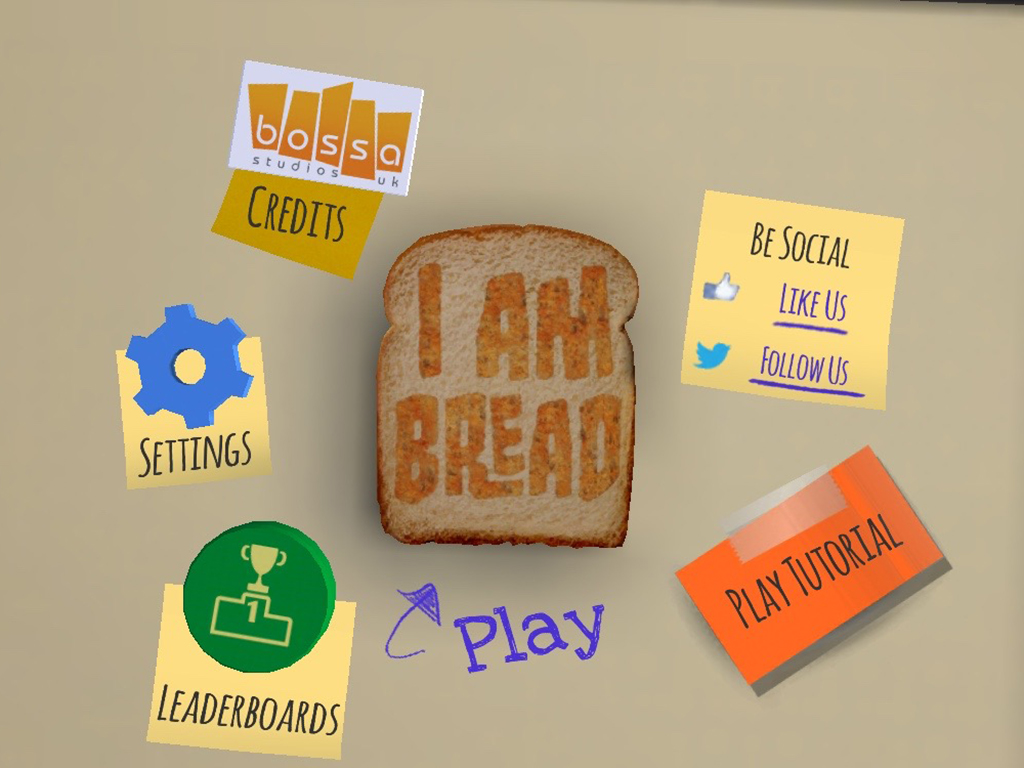
I Am Bread started with a simple concept, “If bread wanted to become anything, it would be toast,” which sounds like the type of bad idea people might make fun of during a boardroom meeting. But instead of turning into an office joke, I Am Bread became a full-fledged game.
And surprisingly, this is the trope I Am Bread’s entire experience is built around – you’re a piece of bread and your ultimate goal is always finding a way to get “toasted.” Sometimes this involves a task as simple as jumping into a toaster (which is significantly more difficult than it sounds). In other situations, the player needs to knock a bowling ball onto a television, and, using the sparks from the broken device, char the bread. Yes, you read that correctly.
With all of this said though, U.K-based Bossa Studios’ I Am Bread isn’t a very good game. In fact, it’s actually categorically bad, at least by most critical standards. The game’s controls are obtuse, level goals are unclear and visually, I Am Bread is underwhelming, even for an iOS game. Additionally, at times, the game is also mind-bendingly frustrating and its camera reminds me of something that was featured in an early Nintendo 64 title.
But this is what IAB is all about. I follows the same vein as Bossa’s other extremely difficult, so-bad-it’s-good title, Surgeon Simulator 2015, which quickly shot up the Steam and iOS chairts because it was a favourite of popular YouTube Let’s Play commentary video creators like PewDiePie.
So if I Am Bread is so weird and strangely designed, why is it still a fun game? Sometimes entertainment doesn’t stem from where you think it should in video games. The game is compelling because it’s crazy and probably shouldn’t exist, and it’s also a lot of fun to watch other people play it. If you’ve heard of Coffee Stain Studios’ Goat Simulator, you’ll likely understand the direction Bossa Studios took I Am Bread.
“It was a simple premise with a simple goal – we went ahead and spent two days building a rough demo in a game jam. It actually had none of the toasting mechanics or any real game there but it did have the bread flipping and flopping around a living room while avoiding the floor. This felt compelling and everyone could see the potential so that’s when we decided to take it further and turn it into a full game,” says the studio’s main designer, Luke Williams.
Despite the fact that I Am Bread feels like it was designed specifically to be frustrating, especially when it comes to controls, Williams claims Bossa Studios put a significant amount of effort into ensuring moving the player’s piece of bread around felt just right, or wrong, depending on how you look at it.
“We just decide how we want something to control or the type of movement we want and then use the input devices in a way that gives us that result. So for I Am Bread we wanted to almost make the bread move in a way that people would expect bread to move. One way we achieved this was by having the bread able to grip with each of its corners which allows it to flop and swing around the environment,” continues Williams.
“Once we have the control scheme we actually polish and refine it as much as we can so it plays as good as we can make it. The general perceived difficulty is more because it’s an entirely new way to play a game so takes a bit of practice.”
However, the average player will likely pick up the game and wonder where all that effort actually went (at least at first), because getting your bread from point A to point B is often exceedingly difficult — so much so that it’s basically the entire point of the game. But this is the genius of I Am Bread: It’s a silly idea that actually makes a compelling video game. Also, if IAB’s controls were more fluid and accurate, it wouldn’t make for a better experience.
Games like I Am Bread find an audience because they’re wacky, stupid and, most importantly, probably more fun to watch someone else play than to pick up yourself.
This is why titles like I Am Bread have struck a chord with YouTube’s gaming demographic and exploded in popularity.
I Am Bread is available on the iOS App Store for $4.99.
MobileSyrup may earn a commission from purchases made via our links, which helps fund the journalism we provide free on our website. These links do not influence our editorial content. Support us here.




